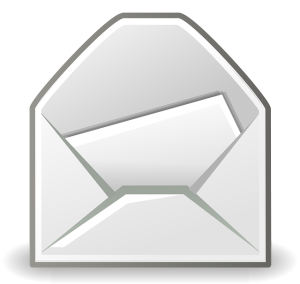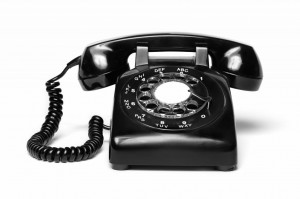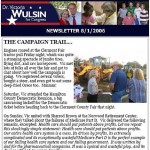
Monday - Friday | 9am - 5pm Central
Referrals are very valuable. If you aren’t actively and consistently taking action to give and receive them, do something now!
But, here’s a little tip that I wanted to share with you that many lawyers either don’t take the time to do or don’t think about-send handwritten notes.
 I know that many think that handwritten notes are old school and that the primary form of communication is email. That is true, but handwritten notes will demonstrate to the recipient the value you place the relationship. It takes time and effort to write and mail a card, but you will be rewarded because it will place you higher in their minds than those that may, or may not, send an email.
I know that many think that handwritten notes are old school and that the primary form of communication is email. That is true, but handwritten notes will demonstrate to the recipient the value you place the relationship. It takes time and effort to write and mail a card, but you will be rewarded because it will place you higher in their minds than those that may, or may not, send an email.
In some cases, the low-technology and old school methods are the way to go!
Do you send hand written invitations and thank you notes to your referral sources? If not, why not? I’d love to hear from you so post a comment below and let’s chat!
We have a lot of little tips and techniques to help you market your estate and elder law practice. Sign up for our 21 Day Legal Marketing Bootcamp and we’ll deliver them daily right to your in-box!
Do you want to talk about other strategies to help you implement your marketing plan? Feel free to schedule a time on my calendar for a no-strings virtual cup of coffee to chat about your business. I promise you will come away with a good plan for turning your ideas in actions!
“Ack! My open rate is 25%!”
I’ve heard this a few times from lawyers who believe that they are shooting for a 100% open rate. The thing is, the open rate is not an accurate measure for determining how many people are reading your email or ezines. Here’s why:
Email programs are finicky!
 There are some email programs that are not capable of displaying the HTML (the behind the scenes code that makes your email look good) and images. There are a few programs that only display straight text, and you really need nice looking, easy-to-read content. Even the email programs that allow HTML and images, gives the user the option to turn that feature off. So, if someone opens your email in text-only, the program does not count this as an open. Several email clients also have a preview pane option. Many people read through the preview feature so those would also not count toward the open rate.
There are some email programs that are not capable of displaying the HTML (the behind the scenes code that makes your email look good) and images. There are a few programs that only display straight text, and you really need nice looking, easy-to-read content. Even the email programs that allow HTML and images, gives the user the option to turn that feature off. So, if someone opens your email in text-only, the program does not count this as an open. Several email clients also have a preview pane option. Many people read through the preview feature so those would also not count toward the open rate.
Even the email development services will tell you not to expect high numbers. According to Mail Chimp, in the best case scenarios the open rate would be around 50%. When they measured open rate per industry, the found that the average open rate in the legal industry is 22%.
Once explained, we tend to hear something a bit different from our clients. Like this…
Oh boy! My open rate is 25%!
Almost the same words, but with a completely different attitude!
I’m not advocating for ignoring your open rate, just know that this isn’t an exact number and should be used as a guide. If you would like to learn how to get the best bang for your marketing buck, give us a call.
Did you know you can join our Inner Circle Accountability & Private Group Coaching Program for just $1.00? That’s it! Click here and you’ll see all that you get for 30 days!
Would you like to talk about how we can help you save time on your marketing and help you turn ideas into action? Simply schedule a time on my calendar for a no-strings virtual cup of coffee.
Ramp Up Speaking Engagements to Promote Your Law Practice in Multiple Ways
It’s pretty common for lawyers to be advised to incorporate speaking engagements into their overall marketing strategies, and we don’t mind jumping on that bandwagon…because it works! A lawyer’s original goal in doing these types of talks might be to have someone from the audience come up and hire them on the spot, and while that does happen from time to time, it’s good to recognize that there are actually several other ways that speaking engagements benefit your practice and boost your marketing.
Building Your Reputation
If you’re doing it right and presenting good information, every speaking engagement you do helps put you in the position of “expert.” The more people who see you giving advice and insight on a particular topic, the more will recognize you as the go-to person for it. It’s not all for show, either. The more presentations you give on something, the more you actually do understand and become an expert. It’s a win-win situation that markets your law practice in a really positive way.
Cost Effective
Most of the time, the chance to do a speaking engagement costs you nothing other than the gas to get there and the time it takes to present. Heck, you might even get a free lunch out of the deal! There aren’t a lot of marketing methods for lawyers that are so incredibly cost effective.
Minimal Work
When an organization invites you to speak to its members, they generally do 90% of the work for you. They take care of scheduling. They set up the microphone and any other needed technology. They even bring you the audience! Your only real preparation is to put together a presentation that the audience will find valuable. Plus, once you’ve got your notes, slides, or other materials created, you can give the same presentation to many different audiences.
Opportunity for Further Marketing
When you leave the speaking engagement, the marketing doesn’t have to end. Instead, make sure that everyone who is interested is able to take some sort of branded material away from the event so that they know how to contact you if they need further information. This is also a great opportunity to follow through on one of a lawyer’s favorite marketing practices: offering a free consultation.
Finally, make sure everyone at the event has the opportunity to sign up for SOMETHING so you can continue reaching out to them long after the event is over. In my opinion this is the NUMBER ONE goal of speaking engagements and where I see the most mistakes made! Just because someone is not ready to hire you on the spot doesn’t mean that they (or their family members) won’t need your services in the future. But, if you don’t continue to “touch” these leads, they’ll find their way to someone else. I don’t care if you offer a free book, an exclusive free service or even just raffle off some hot sports tickets or a massage at a local spa, do whatever it takes to entice audience members to fork over their full contact info to you.
Speaking engagements represent some of the best free or low-cost marketing for law practices, and as you can see, there are a lot of benefits that stem from even a single presentation. Imagine how these compound when you make them a regular part of your firm’s marketing calendar.
Would you like to talk about how we can help you save time on your marketing and help you turn ideas into action? Simply schedule a time on my calendar for a no-strings virtual cup of coffee.
Regular speaking engagements are a key piece of any good legal marketing strategy. The more you can get out and educate  the public about your practice area and the value of your services, the more quality leads you’ll see flowing into your law firm.
the public about your practice area and the value of your services, the more quality leads you’ll see flowing into your law firm.
Perhaps your phone isn’t currently ringing with invites and the thought of cold-calling organizations gives you the creeps. Instead of letting it deter you from speaking all together, think of it as a chance to give our favorite LM2 multi-step technique a try:
1. Target ONE specific group or organization– It could be non-profit organizations, moms clubs, nursing homes, companies that host regular “lunch and learns,” etc.
2. Gather all necessary contact information– You can manually compile the contact information of local groups you want to target or work with someone to compile the full contact information of every group or organization within a 25 mile radius.
3. Warm them up with a mailing– This can be an email or a physical mailing explaining who you are, what you’d like to present, and most importantly, how inviting you to speak will benefit their particular group or organization (never forget to address the issue of “what’s in it for me!”). Adding a lead generation piece or free guide to this mailing will supercharge your efforts.
4. Follow up with a phone call– Now instead of “cold” calling, you are simply following up to make sure someone received your letter or marketing materials. From there you can gauge whether there is interest in having you speak or work with their organization in some capacity in the future.
It’s a great technique that works in just about every practice area. Just be sure not to neglect that follow up phone call (even if you have to ask your secretary do it for you!) as it often makes the difference between having your materials collect dust on someone’s desk to getting your speaking opportunity booked and confirmed.
Would you like to talk about how we can help you save time on your marketing and help you turn ideas into action? Simply schedule a time on my calendar for a no-strings virtual cup of coffee.
I’ve been doing a lot of hands-on outreach for our private clients lately to get them speaking gigs in front of referral sources or other relevant groups.
other relevant groups.
I literally spent hours on the phone this week following up with every organization we sent a pitch or speaker packet to, just to see what they thought and if they were interested in moving forward.
For every unfriendly voice on the other end of the line who couldn’t be bothered with my call (which would probably be discouraging if I didn’t have such thick skin!), there was another who was thrilled that I took the time to follow up.
Many had further questions (and real interest) about the materials we sent, but they just never found time to pick up phone and call us back (you know how that goes).
We eventually did land a few speaking engagements and invites to lunch as a result of our efforts–which shows how important follow up is during any marketing campaign.
If you can make one shift in your marketing plan this week, I would encourage you to assign SOMEONE on your team to follow up by phone, email or preferably both when you are reaching out for speaking gigs.
To make things even easier, send something tangible first (i.e a speaker packet, letter, postcard) and you’ll find the follow up call isn’t so “cold,” as you are already on the group or organization’s radar.
Now what are you waiting for–get to it!
Do you have more questions, or would you like to talk about how we can help you save time on your marketing and help you turn ideas into action? Simply schedule a time on my calendar for a no-strings virtual cup of coffee.
 If you dread writing your law firm newsletter each month because a) it’s not fun or b) clients are generally unresponsive to your efforts, you’re probably committing one of three legal marketing sins.
If you dread writing your law firm newsletter each month because a) it’s not fun or b) clients are generally unresponsive to your efforts, you’re probably committing one of three legal marketing sins.
Remember, the point of your newsletter is to develop a relationship with your leads and prospective clients on their own turf. It’s so easy to just “start a newsletter” because a marketing guru tells you to, but you really must understand the “why” behind the “what” if you want to be effective and generate leads/referrals in this area.
So with that said, let’s jump right into the top three things you should NOT be writing in your newsletter:
Hopefully you’re noticing a trend here with my emphasis on words like them, their, etc. Understand that if you can bring the focus of your newsletter back on the client and away from the firm, you’ll be much more effective in bringing in referrals and converting existing leads.
And of course, if you still hate the newsletter process and can’t seem to unleash its true potential, then consider this a job to be outsourced! In today’s economy, a newsletter is one marketing tool that you MUST have, so commit to having one that works for you—even if that means bringing in outside help!
Would you like to talk about how we can help you save time on your marketing and help you turn ideas into action? Simply schedule a time on my calendar for a no-strings virtual cup of coffee.